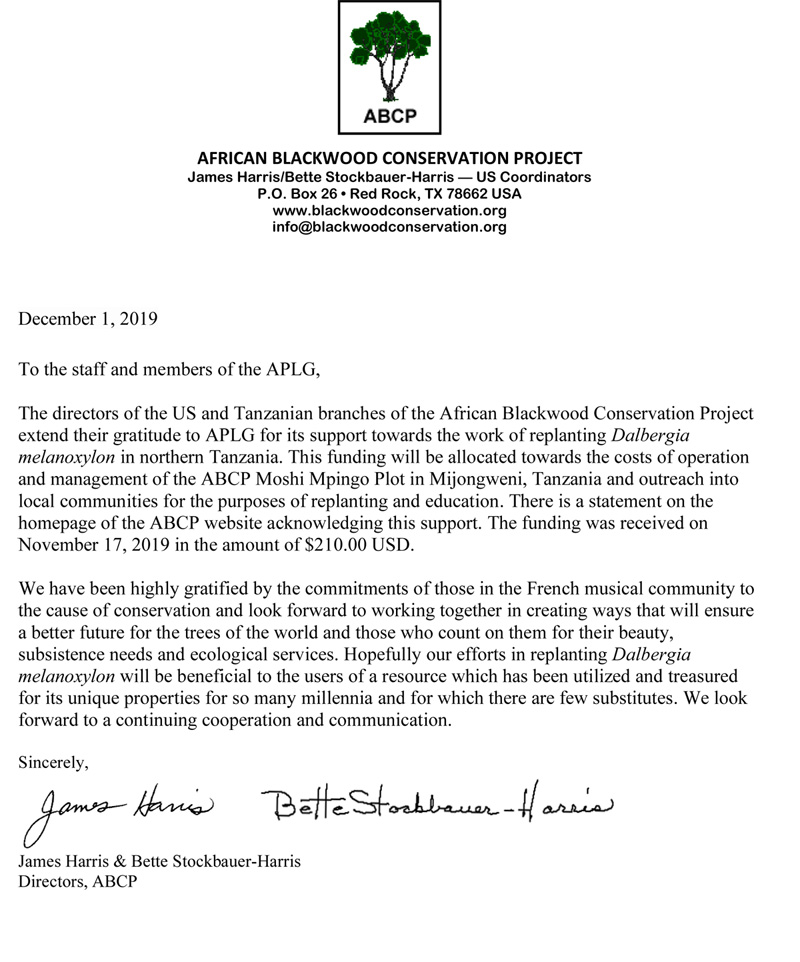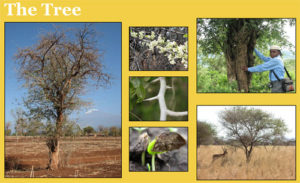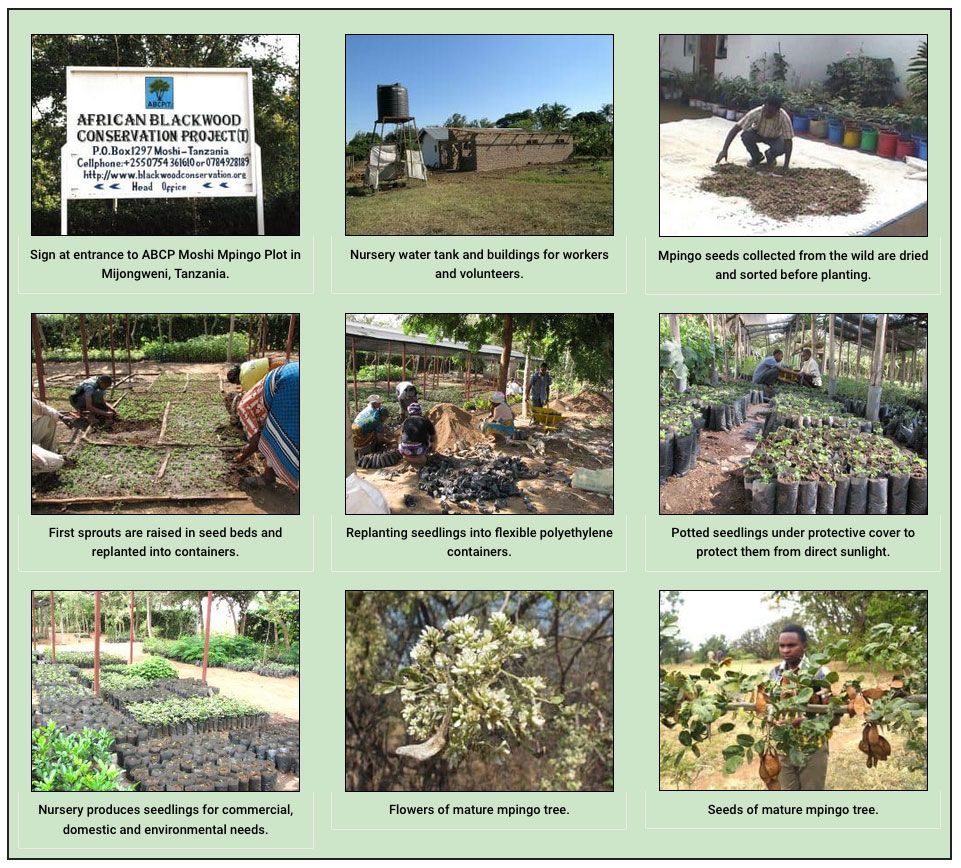With a modest donation of $ 210 to the African Blackwood Conservation Project, APLG is proud to participate in the replanting of this species of dalbergia, often confused with a diospyros. Dalbergia melanoxylon is the preferred species for clarinets and oboes but also works great for back and sides of acoustic guitars!
Thanks to Bette and James for giving us the opportunity to work with those who manage the forests that provide our beautiful woods! We must preserve the primary forest and protect it from all the plagues that condemn it to disappear and with it, our guitars and other instruments in old solid wood!

Implementation of tree planting and conservation education programs in Tanzania since 1996

African Blackwood Conservation Project was founded in 1996 by Sebastian Chuwa (now deceased), a botanist from the Kilimanjaro region of Tanzania, and James Harris, a woodturning artist from the United States. They were brought together by a television program produced by the BBC in 1992 called “Mpingo – The Tree That Makes Music”. This documentary was the first to focus on Dalbergia melanoxylon, drawing the attention of the world community to the significant threats to its future survival due to overexploitation and the lack of adequate conservation measures to ensure its conservation. The film highlighted Sebastian’s efforts to draw public attention to the plight of the species in northern Tanzania, where it is commercially extinct, and reports on his early efforts in a nursery to rear plants and replant the species in areas where it had once thrived. Introducing Sebastian to the job of watering some of his first mpingo seedlings, he commented, “My 200 seedlings are obviously not enough to make a big difference to what is lost. But next year I hope to have 20,000 plants to plant. It is essential for me to act now rather than waiting for the future when things reach a crisis. This paradigm has always been at the root of ABCP’s work.
After seeing the program in the United States, James contacted Sebastian by post and suggested that they coordinate a program targeted at the species based on replanting in its original range and on educating the public to to make it aware of its precarious conservation status. In 1996, ABCP began its activities by establishing a nursery called Moshi Mpingo Plot in Mijongweni, south of Moshi, where Sebastian lived in a rural area of Moshi, near the village of Sungu. Since its founding, the nursery has managed to produce not only thousands of mpingo seedlings each year, but also other native species, some of which are commercially important and others used in the country. They have been replanted in places protected from predators, such as areas of schools, churches, private farms and public institutions.
Growing Mpingo at the ABCP nursery
Dalbergia melanoxylon has traditionally been considered a difficult species to germinate, cultivate and breed to maturity. Perhaps this is one of the reasons there has been so little nursery effort on his behalf. After several years of experimentation, Sebastian developed a method of carefully selecting and planting mpingo seeds in nurseries to germinate, before transferring them to pots until they were around 18 months old, during which time. they anchored a long taproot. strong enough and drought tolerant to survive. Below are photos taken on the Moshi Mpingo plot, which show the steps taken to produce healthy plants.







